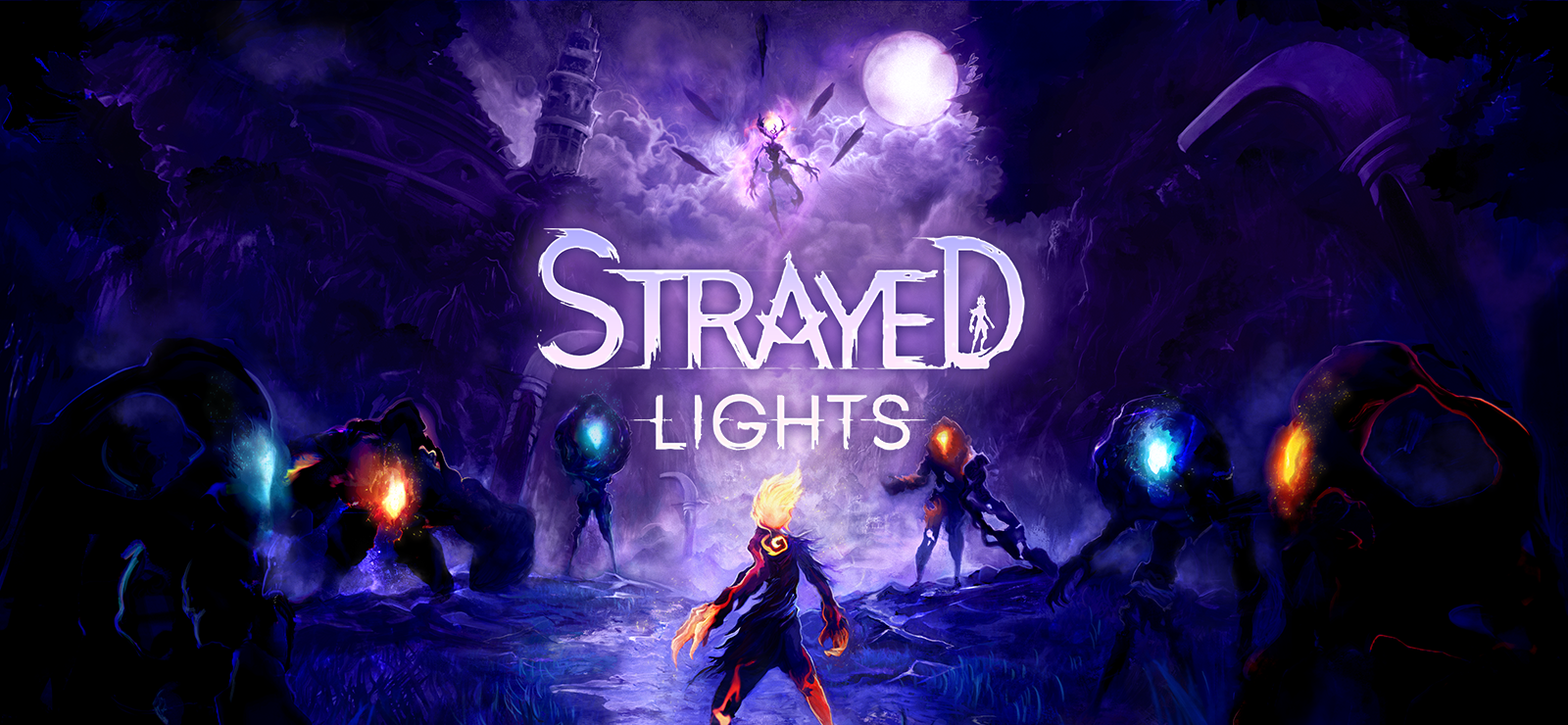Not too long ago, fellow Finger Gunner Rossko gave a rather glowing verdict of Strayed Lights after spending time with its preview. Digging the combat and visuals, it was shaping up to be a bright spark indeed.
Developer Embers have clearly been hard at work since then, polishing and tuning for the final release. Focused primarily on parries and defensive reactions for its gameplay, Strayed Lights is a whimsical third-person adventure game that’s heavy in its themes, bright in its appearance and beautiful in its conception.
Can these lights reunite to spark into a bountiful glow or do they wither away into dullness? Prepare your parrying reflexes, it’s time to face your demons.
Shrouded In Doubt
Strayed Lights takes a lot of cues from games like Somerville, Inside and Limbo with regards to its storytelling. There’s no dialogue, written text or direction provided to you. Instead, there’s a world begging to be explored and interpretation to be had as you venture forth to restore your light.
As Strayed Lights opens, you have your light/soul/energy ripped from you by a malevolent being. After facing down your foe, your core is shattered, causing fragments of yourself to be whisked away. Unable to complete your journey without them, you must embark on a new one. Find your fragments, make yourself whole again, and ascend.
From the intense opening, to the zones and bosses you’ll face, there’s a definite theme here regarding overcoming one’s own demons. It can be interpreted in multiple ways – whether it be challenging others to be better or challenging yourself to face your own fears, for example. It gives Strayed Lights an aura of mystery and reflection which will invoke different feelings within the player experiencing it.
I’m normally one who lets a lot pass over me in say, Souls games, where much of the story is dished out through environmental cues and critical analysis. Here though, I found myself very much wrapped up in the journey, assessing both my avatar’s intentions and the background introspection. It’s superbly handled, incredibly compelling and while it’s a relatively well-trodden trope at this point, I thoroughly enjoyed getting wrapped up in the fantasy of it.
Our main character here may be speechless, but you’ll glean much about their personality, positive attitude and compassion for the creatures around them. Part of what makes the game so compelling is that they’re easy to root for, a bright spark of light in a world shrouded in burgeoning emotion. It helps that the creatures you assist are cute as hell, too.
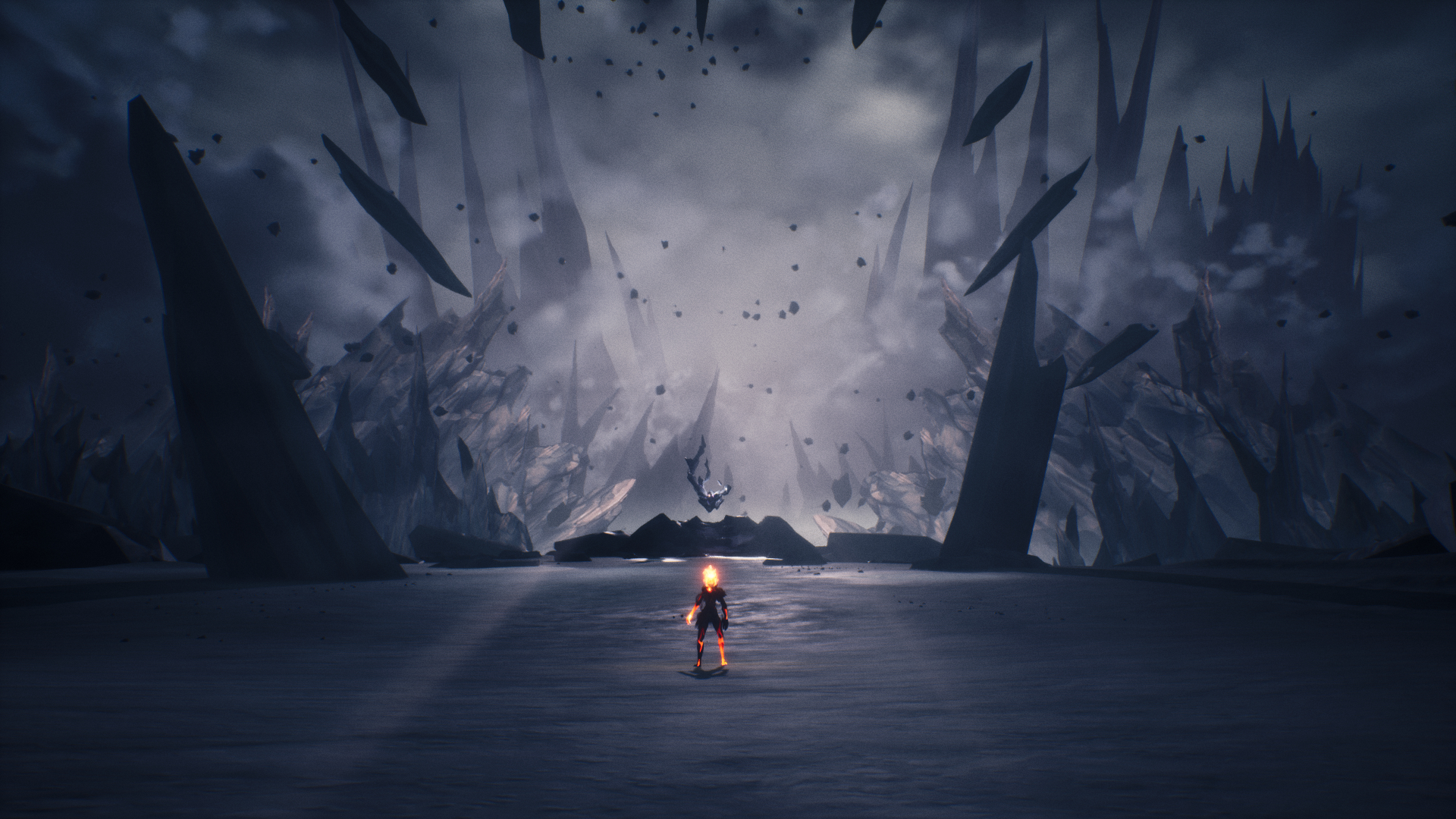
Reignite Your Spark
As you embark on your journey to recover yourself from the spreading corruption, you’ll enter and return to specific biomes. The starting, ever-expanding, arena becomes your levelling up hub, where you can spend your 2 separate currencies upgrading abilities and making yourself more powerful.
You’re able to return to this arena at any time during the game (outside of combat) by hitting the touchpad to meditate. Unlike more punishing action-adventure titles, you won’t lose any progress, as a new portal will open, returning you to where you were. Creating seamless opportunities for levelling up and having a rest fits thematically and provides some welcome respite from more brutal action games.
Through portals, you’ll then travel to two distinct lands. In both, there’ll be a small area where you can interact with Siblings – creatures just like yourself – wandering around the landscape. While you can’t speak to nor engage with them, they’ll react to your presence, switching colour and drawing claws as you do. It’s a nice touch and adds some life to the realms.
Branching out of each land act as levels, each needing to be completed in order to regather your fragments and progress. Before and after doing so, you can search the safe areas for pink orbs, gathering 6 of which will grant you brief insights into how you’ve ended up where you are. It provides a little collectathon feel and encourages you to take in the sights and sounds of Strayed Lights’ areas.
Which, for the record, are gorgeous. But, we’ll get to that.
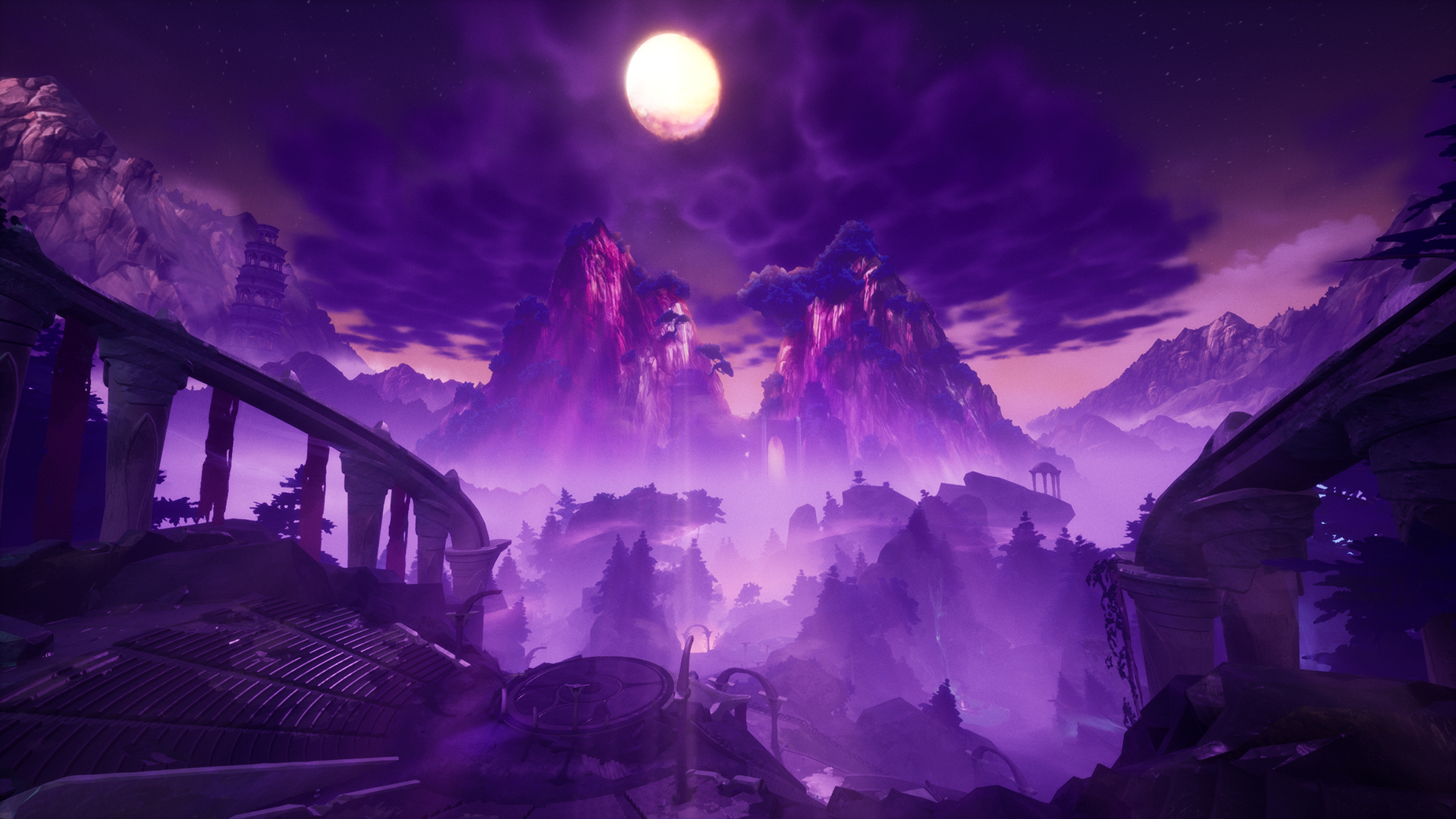
Parry The Night
Venturing into one of the game’s 5 levels (3 for the first realm, 2 for the second), you’ll be needing your courage and your reflexes to overcome this world’s challenges. Interestingly, Strayed Nights opts for a defensive-minded orientation, where precise and accurate timing is king. While you can use R2 for attacks, they’re a much weaker option than getting your timing and rhythm down.
The game is very much focused on tempo. Enemies will use up to three variations of attacks: orange, blue or purple. Using L1, you can switch between orange and blue, countering the colour of attack you’re facing. Purples are unblockable, requiring you to dodge using O with pinpoint timing. As you parry and counter successfully, you’ll build up an energy meter. Once filled, you can end the engagement with a smack of L2, completing the dance of assaults.
In the initial stages, Strayed Lights feels like an easier, more accessible and forgiving Sekiro: Shadows Die Twice. However, once things start progressing, enemies will launch longer tirades of combos, mixing up which colours are needed to deflect efficiently and you’ll even need to face 2 foes at once. Unlike Devil May Cry though, you can’t manage them by keeping one of them off-screen (which I found out the hard way).
The combat system as a result is intensely satisfying. There’s nothing more intrinsically rewarding than nailing a frame-perfect parry, swatting off an entire combo and then unleashing a battle-ending super flare at the end. Strayed Lights has relatively forgiving windows with which to hit your timing, but it will absolutely punish you if you simply mash the button, or if you attempt to dodge your way to success.
You can also parry with the non-matching colour to deny damage, at the expense of building your energy needed to end the fight. This creates a brilliant cost-reward system whereby you’re weighing up if switching mid-combo is worth the risk of missing your timing, or whether you want to chance it to end the engagement as quickly as possible. As far as skill ceilings go, I imagine Strayed Lights will have quite a high one, while still being an accessible option for lesser skilled and more relaxed players.
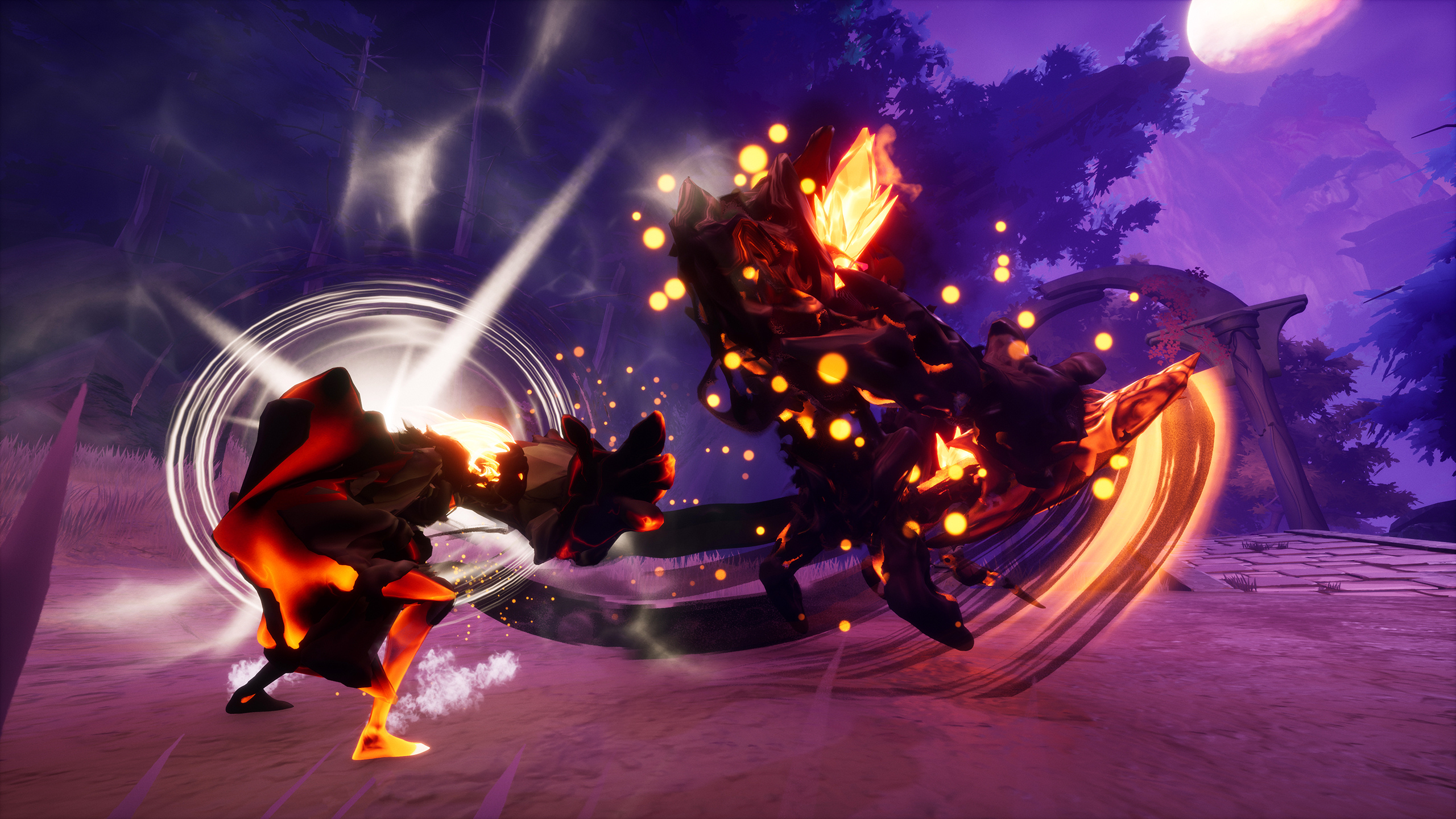
Corruption Looms
Most of the levels are relatively condensed and linear, allowing you to stay on track with ease despite the lack of direction. Along the way, you can collect glowing orbs that will increase your level and as an added bonus, boost your energy activation rate. Defeating enemies and bosses provides you with the previously mentioned upgrade currencies to improve your abilities, nicely rewarding and incentivising you to pick out every fight you can.
The upgrade tree is small, encompassing 3 tiers for 3 abilities (a lunge attack, a stun and a brief window parrying any colour without switching) and smaller upgrades like increased health, a sweep attack and improving your efficiency with parrying. There’s not a lot of them but they make a big difference in gameplay. Abilities also have a set amount of points that are recovered by defeating enemies, meaning they can’t be abused, particularly against bosses.
Speaking of which, the bosses in Strayed Lights are excellent. Each big bad has a unique style and mechanic tied to it, plus they have their own distinct narrative theme. An illusory, deceit-focused boss needs to see the real world’s beauty to be freed, but will use those illusions to disrupt your timing and perception, as an example.
Far from being trivial battles, they took me a couple of goes at least to get the hang of their extended combo strings and superpowered moves. One even got me more times than a typical Souls boss, to the point I queried if I’d wondered into a hard mode (Strayed Lights doesn’t have difficulty options, I’d just become complacent and impatient, figures). At the end of the climactic showdown you’ll perform a couple of QTEs that end the rumble in epic, flashy fashion.
Particularly in the second realm, the challenge ramps up pretty significantly, which I was pleased by. Strayed Lights was in danger of being a little too passive and reliant on its satisfying mechanics, until that section kicked my ass and ordered me to get my timing in order. Which I duly did. A couple of combo strings can feel a little unfair and the timings for them weren’t always especially solid, but it wasn’t anything a bit of practice and patience couldn’t overcome.
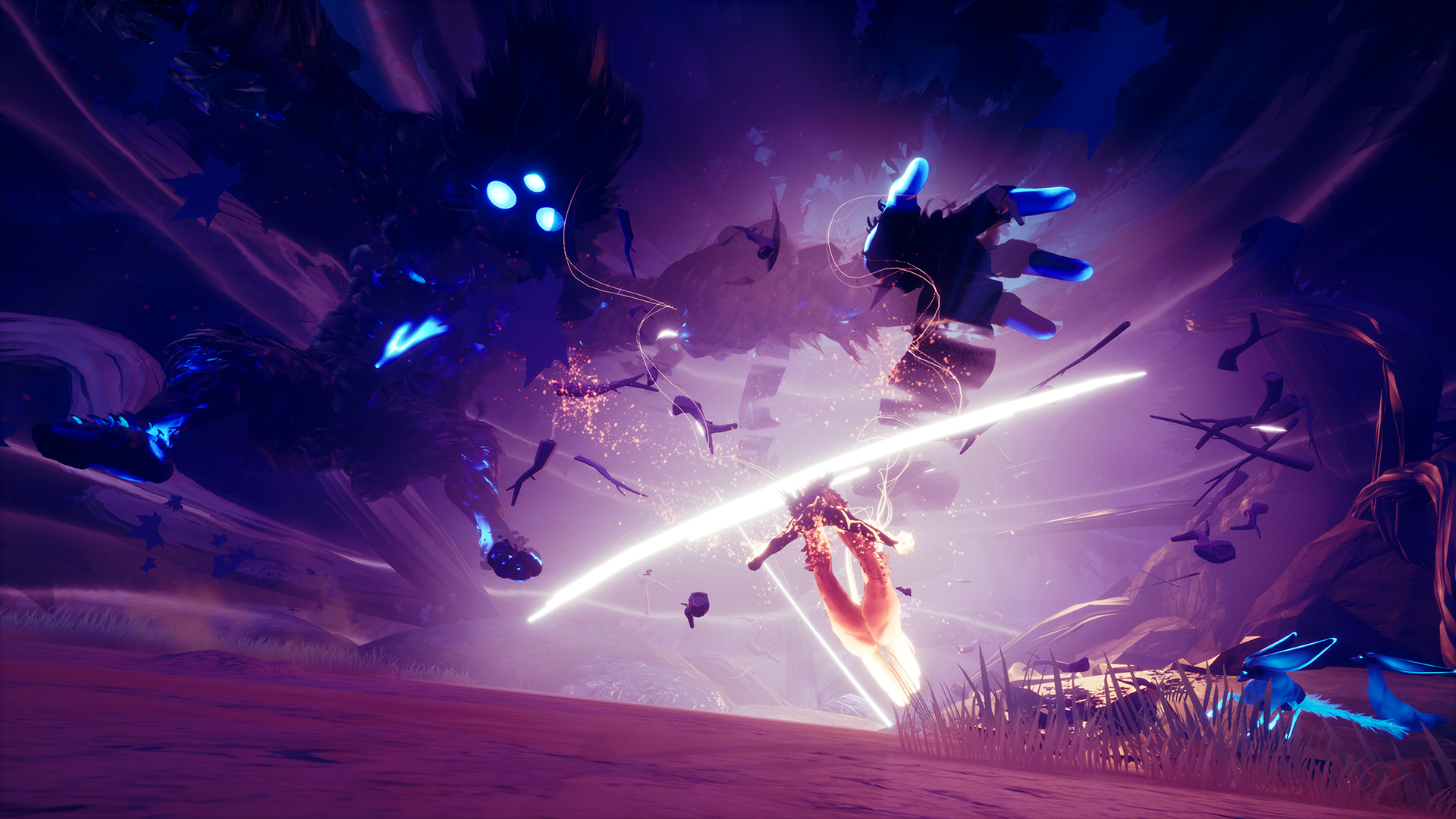
A Flame Of Beauty
Now we come to the rip-roaring, blazing highlight of Strayed Lights – the art style and musical score. Put simply, this game looks and sounds stunning. Entering any of the biomes had me strolling around, taking in the sights and sounds with glee. Small touches like the glowing hue of a collectible orb, the animation effects of the wind rustling through a lush forest or the dank atmosphere of a spider-infested cave, all combine to create a gorgeous series of spaces I was compelled to explore.
This game begs you to breathe it all in and get immersed in its wonderful art direction. The cel-shaded graphics, combined with superb animation work and vibrant colour scheme kept me enthralled through out. I struggled to stop playing simply due to the desire to see more of this fantastically rendered land. Boss and enemy designs aid the selling of the game’s central themes, while I couldn’t help but lap up the vistas that Strayed Lights regularly throws your way.
It reminded me of Journey in how it approaches creating open, wide landscapes with a impressive sense of scale – towers looming in the distance, lush fields and waterfalls decorating the horizon. I can’t quite reiterate quite enough how much I dig this art direction. The concept and visual artists deserve a yearly subscription to a golden retriever sanctuary, so they can get the love they deserve.
Massive props also has to go to the soundtrack. That Journey comparison was apt in more ways than one, as Strayed Lights’ composer – Austin Wintory – lights up the scene with some phenomenal sound work. Much like his previous portfolio, the music sequences are ambient and meditative, even in some of the more gloomy areas. This will be one hitting a few people’s Spotify playlists, of that I’m certain.
I had a couple of niggles, like the slightly janky climbing animations and the odd collision problem with some geometry. However, these are minor shadows cast from an otherwise beaming, raging source of fiery light.
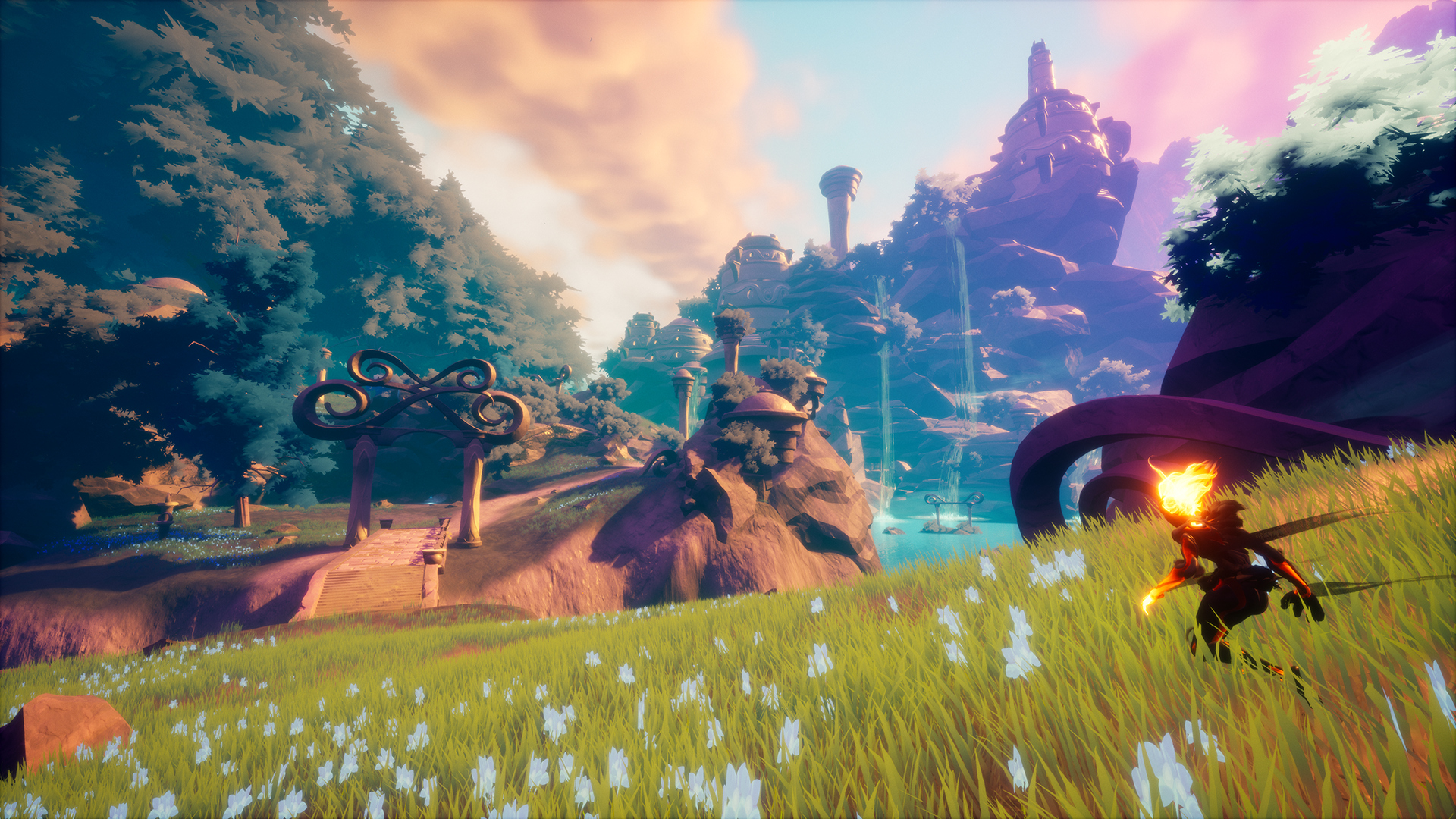
Where The Light Burns Brightest
It’s fair to say, Strayed Lights blew me away. Much like other short-and-sweet indie gems, what it lacks in content hours, it makes up for with stunning presentation value, rewarding gameplay systems and a wholesome, introspective story.
It does have some very minor issues and at roughly 3 hours it does feel like this light goes out a little quicker than you’d hope. There’s no new game+ nor harder difficulties to add any sense of replay value, but then I wonder if games like this are so special in part because of their short-lived and experiential nature.
I think it’s a testament to how Embers have managed to hone in on one particular gameplay element so superbly that I was left wanting so much more of what Strayed Lights was offering. It’s bold, it’s beautiful and its boundless fun. Don’t miss it.
A short but sweet experiential title, Strayed Lights shines bright above its station to deliver an atmospheric tale of self-discovery, rewarding combat and a fantastic graphical and audio treat. This light may not burn long, but it’ll leave quite the impression despite the odd minor issue.

Strayed Lights is available now on PlayStation 5 (review platform), PlayStation 4, Xbox Series S|X, Xbox One and PC.
Developer: Embers
Publisher: Embers
Disclaimer: In order to complete this review, we were provided with a promotional copy of the game. For our full review policy, please go here.
If you enjoyed this article or any more of our content, please consider our Patreon.
Make sure to follow Finger Guns on our social channels –Twitter, Facebook, Twitch, Spotify or Apple Podcasts – to keep up to date on our news, reviews and features.
